This ALF EPISODE (529) was a fascinating look at slow pitch jigging, but there are numerous other fishing genres covered in our lure fishing archives


Mick Hassett
Tackle Industry Personality And Youtuber
Mick has been fishing the Mackay area for more than 30 years, but has also travelled Australia and the world in pursuit of fishing. A tackle enthusiast, he has become well known for his success with the slow pitch jig, often finding he gets better results than experienced live bait exponents. Mick’s Youtube channel is a constant source of info and entertainment not only for the jiggers amongst us, but also for other styles of reef, coastal and estuary fishing.
Mick’s Slow Pitch Jigging Tips!
- Traditional high-speed jigs are tail weighted to get them down to depth fast, but slow pitch jigs are centre weighted to make them flutter like a falling leaf. They are fished more slowly, from slow to medium pace, and are worked in a kind of vertical “walk the dog” style.
- The tackle for slow pitch jigging is quite specialised. It’s possible to work the jjgs on regular gear but you won’t get nearly the same results.
- Slow pitch rods are rated by the weight range of the jigs that will be used and the diameter of the line. They are very lightweight but are designed to impart action to the jig that can’t be imparted with normal rod styles. When fighting fish it’s important not to “pump and wind” but instead to grind with the reel, keeping the rod work to a minimum. It’s very easy to high stick and snap a slow pitch jig rod.
- Reels need a high gear ratio to impart speed to the jig with every “pitch” and so that the lure jumps up and then flutters backwards
- A “pitch” is a full turn of the reel handle, so when an angler talks about imparting a “half-pitch” they are cranking the reel handle half a turn with a slight pause between.
- It’s vital that your jigs are fished vertically beneath the boat, so lines for this style of fishing are always braid, and it’s important to get the thinnest diameter you can get away with. Better quality lines will have greater strength for their thickness, allowing the angler to get their jig down to the required depth but still having enough strength to handle tough fish. Make sure the line is matched to the rod.
- A nylon leader is better than fluoro because it has slightly more stretch, which acts to catapult the lure and increase the action. Depending on conditions and species, Mick uses 60-130lb leader for slow pitch jigging. Leader length is a compromise between not increasing drag and giving some protection at the business end. A 3m leader connected to the braid with an FG or PR knot is fine, there’s no problem with having a few turns on the spool. Leaders of this length also assist with managing fish once you have them boat side.
- Jig weight varies depending on wind and current, but as a rule it’s best to use the lightest jig you can get away with on the day. As a rule of thumb, start with 2g of weight for every metre of depth and then adjust up or down as conditions dictate.
- Mick likes to have a wide range of jigs to choose from and uses wider bodied jigs for extra flash when the current is slow but uses longer, more slender lures when the current is faster. Wider lures are harder to get the walking action and need to be fished slower.
- A well-worked slow pitch jig can call fish from a long distance and Mick often finds that fish that aren’t even showing on his sounder can come from outside of the sonar beam and smack a jig ten metres off the bottom.
- Double assist hooks at the head of the lure are Mick’s preference when rigging slow pitch jigs and he ties the line to the solid ring, then uses a split ring to attach the jig. He doesn’t typically attach hooks to the tail end of the lure simply because it makes the lure more likely to get snagged and isn’t necessary in North Queensland due to the aggressive nature of the fish.
- When choosing hooks for your jig it’s important to choose a wide gape hook in a size that gives plenty of strength when a solid fish hits the lure and is big enough that the hook can’t get fouled on the jig body. Mick Uses the BKK Sea Ranger line for jigs of 60-80 grams and uses the 2XL and 3XL sizes. For jigs from 10-130g he’ll use a 3/0 BKK Lentus. Above 130g Mick would swtch to 4/0 Lentus hooks…. jigs of over 150g are not usually required around Mackay.
- Jig colour selection is important and can influence the species you pick up. Palms Slow Blatt R jigs are among Mick’s favourites and the company has a jig colour guide that can help with this process. Crustacean and baitfish colours work well. Coral trout love silver, but you’ll lose a lot of silver jigs to mackerel. Mick likes crustacean colours for a range of species, and also gold.
- Mick finds that electric motors don’t help much with slow pitch jigging, but a drogue or sea anchor can sometimes help to anchor boat movement to the direction of the current and reduce the effect of wind. Mick usually doesn’t need the drogue though.
- Once you are ready to fish, motor up ahead of the drift, turn your boat side on to the drift so that the side you want to fish from is into the wind and when the boat is stationary, turn the motor full lock into the wind. By doing this every time the boat will consistently drift along the same line, so you won’t miss the spots you really want to drift over.
- Finding pressure points and places where bait is aggregated is the key to finding fish. Switching your sounder to a blue background instead of white will help make it easier to see fish and having a system of colour coding and icons to mark likely ground versus places that have produced fish versus bait makes finding ground more efficient.
- In terms of working jigs, there are lots of techniques that can be used and most of them will work from time to time. Mick finds that Great Barrier Reef fish species tend to be aggressive and that the “half pitch” technique is perfectly suited.
- The half pitch technique involves turning the reel handle one full revolution every second but doing so in two half turns with a brief pause between. For slow pitch jigging, this is a fairly aggressive retrieve. Mick recommends this website for understanding the tackle and techniques better.
- Mick works the lure to about 25-30% of the water column from the bottom. Having the lure too close to the bottom for too long will result in the less desirable scavenger species like stripies and cod, bringing it further up picks up the predators like coral trout, fingermark, emperor and nannygai.
- It’s super important to ensure the rod can “snap” back and make the lure pop to the side. If you don’t give the jig that moment of slack line and fall you won’t achieve the fluttering, walk the dog action that is so deadly.
- Mick’s take-home tip is that if you really want to give this style of fishing a red-hot go it’s important to set yourself up with the right tackle, which isn’t necessarily going to be cheap. Overhead style reels are a must-have and for north Queensland a PE3 or PE 4 rod capable of handling jigs in the 40-150g weight range is perfect. Get the thinnest, best quality line and leader you can afford and you’re in business.
Related Episodes
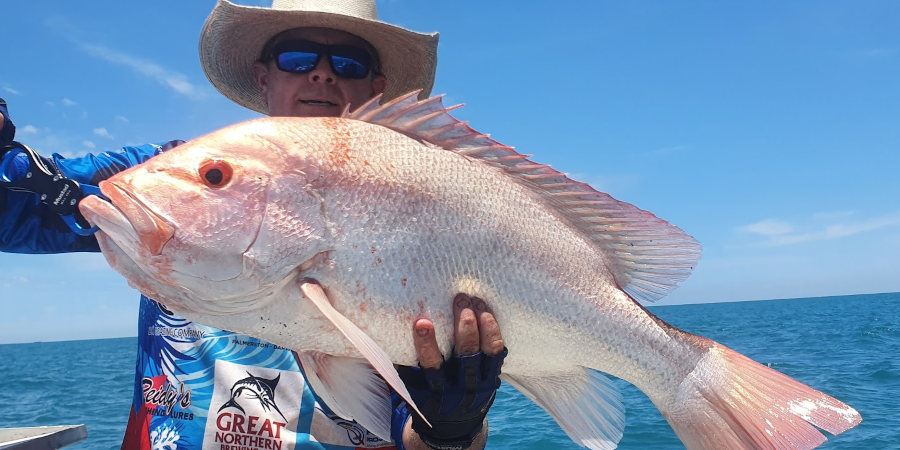
Jigging Jewels: Uncovering Nannygai Hotspots in the Sir Edward Pellew Islands
Saddletail snapper, largemouth nannygai, scarlet sea perch. Call ’em what you will, this fish is one tough customer and a very popular jigging target across Australia’s north. And by all accounts, there’s no better place to target them than the Sir Edward Pellew Islands group in the SW Gulf of Carpentaria.

Conquering Port Douglas Fingermark With Isaac Fenech
Fingermark are a challenging sportfish to find and catch, but Isaac Fenech does pretty damn well with them in the inshore zone, fringing reefs islands and headlands around Port Douglas in Far North Queensland.
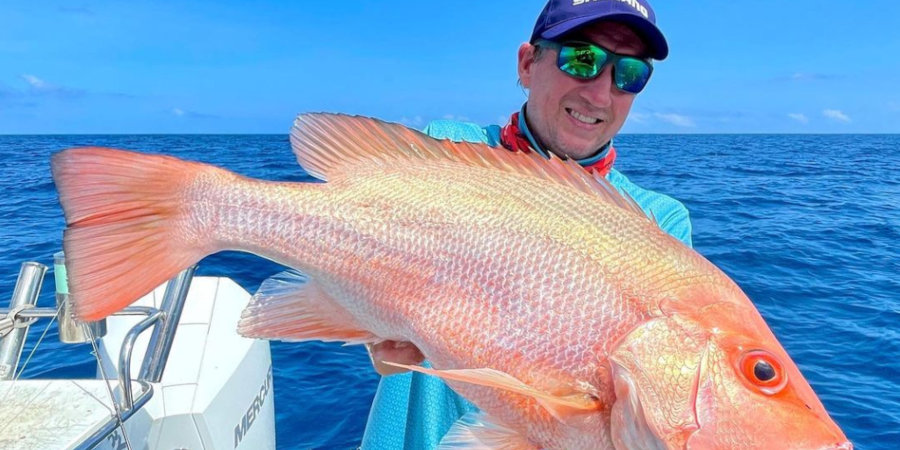
Five Groote Eylandt Fishing Adventures With Bomber Farrell
Bomber Farrell returns to the ALF podcast, this time to explain his top five Groote Eylandt fishing experiences!
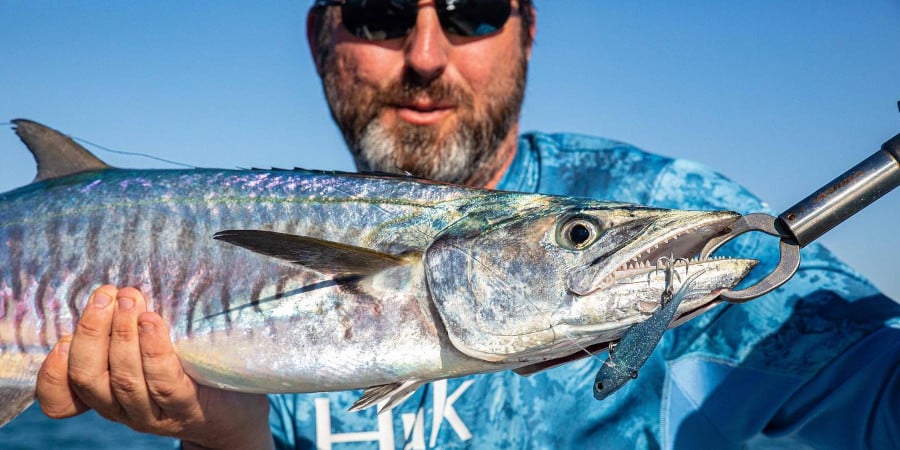
Episode 547: Fishing Around Exmouth In Spring With Steve Riley
Every time I interview Steve Riley about fishing the Exmouth area I get blown away by the opportunities on offer, but I think this interview could be my favourite so far. Steve spills the beans on five land-based fishing spots that are available to visiting anglers during spring. In the course of the conversation we cover everything from bream and whiting to tuna, reef species and pelagics including monster GT from the beach. What a destination!

Episode 545: Best Hervey Bay Fishing Spots In Spring With Scotto Mitchell
Spring is a great time to fish the Hervey Bay area land-based or from a small boat or kayak. In today’s ALF episode local personality Scotto Mitchell helpsput us onto some awesome fish with simple tackle and techniques.
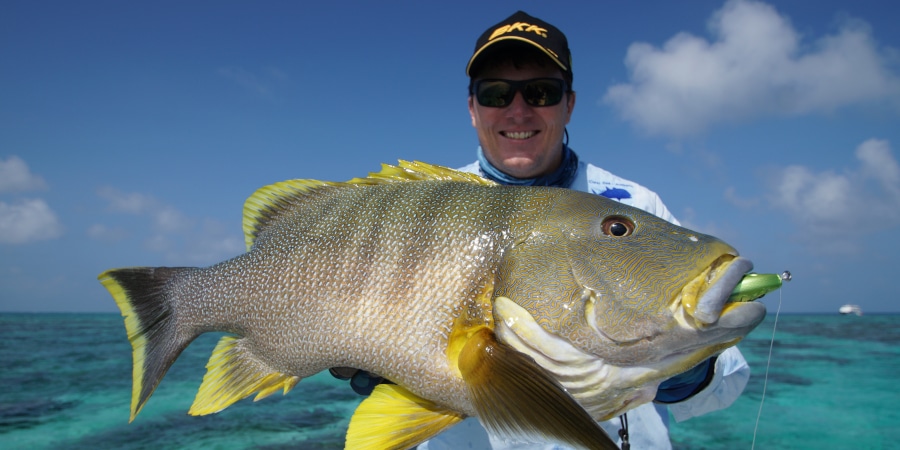
Episode 525: Five Best Queensland Sportfishing Destinations With Damon Olsen
Damon Olsen has spent over 20 years exploring every corner of every reef between Fraser Island and the tip Of Cape York. In today’s episode he walks us through the five destinations he’d really like to go back and fish all over again!
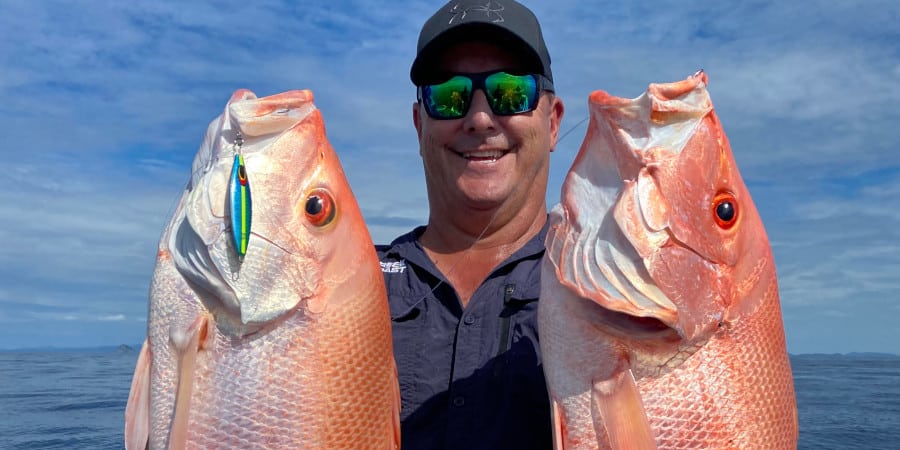
Episode 484: Ingham Large Mouth Nannygai With Scotty Hillier
Scotty Hillier has spent a lot of time working and fishing in the Ingham area and large mouth nannygai are among his favourite species to chase. In today’s episode he explains how he goes about targeting the big red fish.
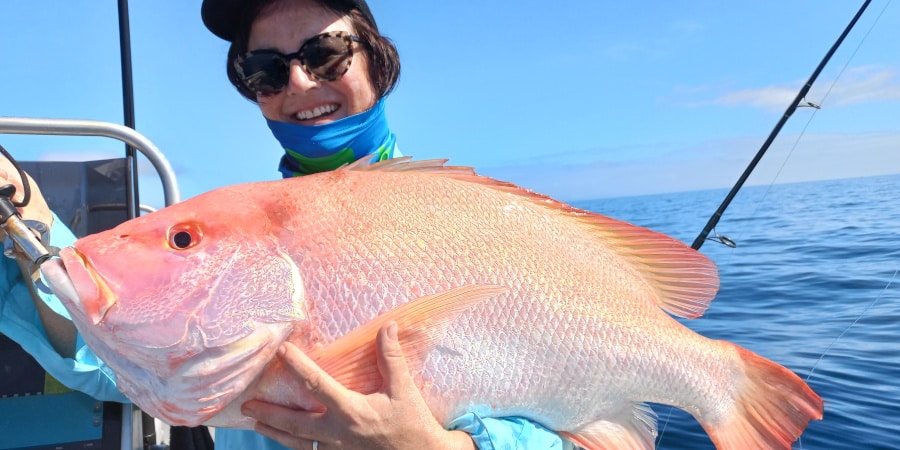
Episode 447: Lucinda Large Mouth Nannygai With Ben Weston
Ben “Westo” Weston FNQ Fishing Writer And Sportfishing Guide Westo is a Far North Queensland based angler and former fishing writer who rarely fishes anywhere other than Hinchinbrook these days. He’s recently established “Wild Hinchinbrook Adventures”, a guided...

Zero In On Bloomfield Wonky Holes Nannygai
Don’t head out looking for nannygai without listening to these top tips from Nicko Fewtrell!
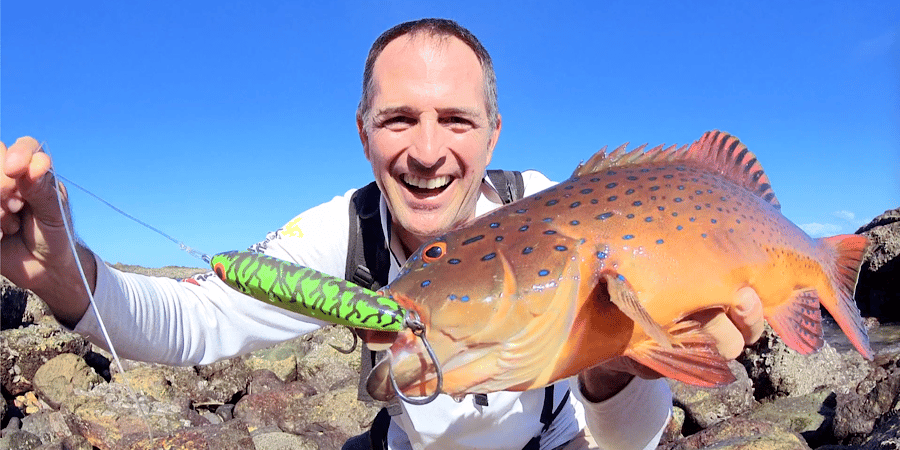
Episode 377: Whitsundays Land-Based Coral Trout With Andy Thomsen
Coral trout from the shore? No problem! Today’s guest Andy Thomsen is happy share his secrets for targeting colourful, tasty fish from the stones.

Jigging Jewels: Uncovering Nannygai Hotspots in the Sir Edward Pellew Islands
Saddletail snapper, largemouth nannygai, scarlet sea perch. Call ’em what you will, this fish is one tough customer and a very popular jigging target across Australia’s north. And by all accounts, there’s no better place to target them than the Sir Edward Pellew Islands group in the SW Gulf of Carpentaria.

Conquering Port Douglas Fingermark With Isaac Fenech
Fingermark are a challenging sportfish to find and catch, but Isaac Fenech does pretty damn well with them in the inshore zone, fringing reefs islands and headlands around Port Douglas in Far North Queensland.

Five Groote Eylandt Fishing Adventures With Bomber Farrell
Bomber Farrell returns to the ALF podcast, this time to explain his top five Groote Eylandt fishing experiences!
Mick’s Supporters
Tide Apparel
Costa Sunglasses
BKK Hooks
Nomad Design Tackle
EJ Todd


0 Comments